Which way is the best, and how, to meditate?
The Top 3 Ways to Meditate: Insights on Effectiveness from Scientific Research
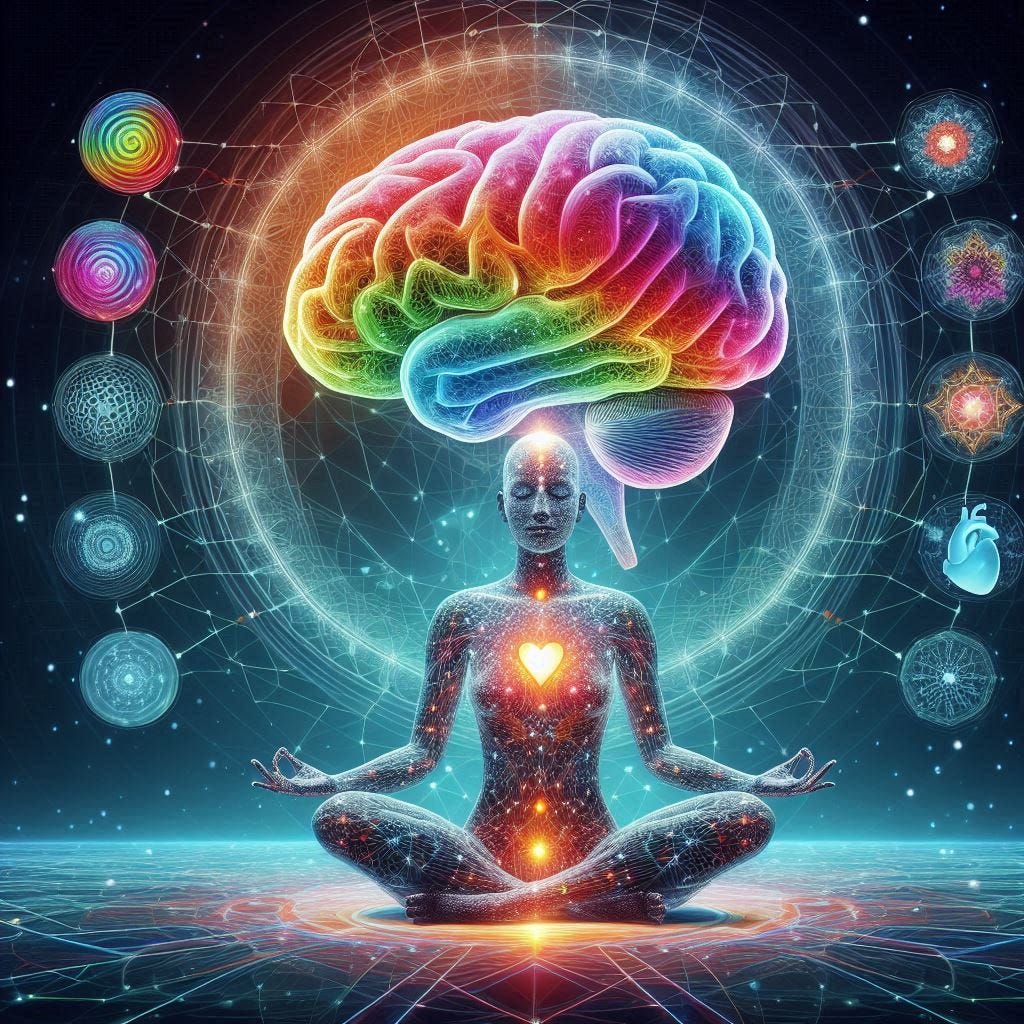
I hope you had a good fortnight and made progress in your careers and/or your family are happy. This week, to celebrate World Mental Health Day, I’m doing a deep dive on meditation, comparing different methods, from beginner to advanced—that I’ve tried myself—to show you which one worked the best for me to relieve anxiety and depression (Not one size fits all!) So, if you’ve never tried, or tried and failed, or are even an advanced practitioner, this post may be just what you need.
Reading Time: 22 mins
Word Count: 5163
The Problem with Not Meditating?
Did you know, you have an onslaught of approximately 6,000 thoughts per day,[1] which is roughly equivalent to 4 thoughts a minute. Buddha said, ‘we are what we think, all that we are arises within our thoughts.’[2]
While we would hope that most of our thoughts are concerned with work-related solutions, how many of these are negative thoughts, like worries about the future— anxiety—or worries about the past—depression—in your typical day?
Before we consider how meditation has personally helped me avoid negative thoughts like these and which way I have found to be the best way, and how to do it, it may help to briefly consider where meditation comes from—the most ancient techniques to help modern life—and its researched scientific benefits, and the limitations of that research (don’t believe the hype, it isn’t a panacea for every ailment!)
Key Findings
1) Meditation has been practiced for millennia; It is integral to who we are as human beings.
2) Research on meditation shows slight to moderate benefits for reducing anxiety and depression, but meta studies are not conclusive about other benefits.
3) Every meditation method requires a concentration object: Silent mantra, verbal mantra, breath, but it could be as simple as a flame or bowl of water.
4) Three methods are evaluated: TM, OM MANI PADME HUM, and The Four Tetrads of The Ānāpānasati Sutta, plus one BONUS method!
5) The best way to meditate depends on your personal characteristics. Not one size fits all, as many practitioners may have you believe.
Who invented meditation and does it matter who?
Who invented meditation depends on how you define meditation, but in the broadest sense, it means concentration and contemplation[3], and I’ll tell you why it matters who after we consider a few suspects for the earliest inventor.
Some say the earliest detailed meditation instruction, still practiced today, comes from The Ānāpānasati Sutta (Pāli) (3rd – 2nd century BCE, "Breath-Mindfulness Discourse," (or mindfulness of breathing) in the Majjhima Nikaya, in the Pali Canon, which is from Therevada Buddhism, containing sixteen steps (see below).
Others say the mantra “Om Mani Padme Hum”, which first appeared in written form in the Mahayana Karandavyuhasutra, a Tibetan Buddhist text, is earlier from around the end of the 4th Century BCE.
This mantra (‘that which protects the mind’[4] ) is known as “The Jewel in the Lotus” (Om=Jewel, PADME=Lotus) considered the purist summation of all Buddhist teachings, printed on prayer flags outside every Tibetan house and monastery, and chanted by thousands still every day, today.
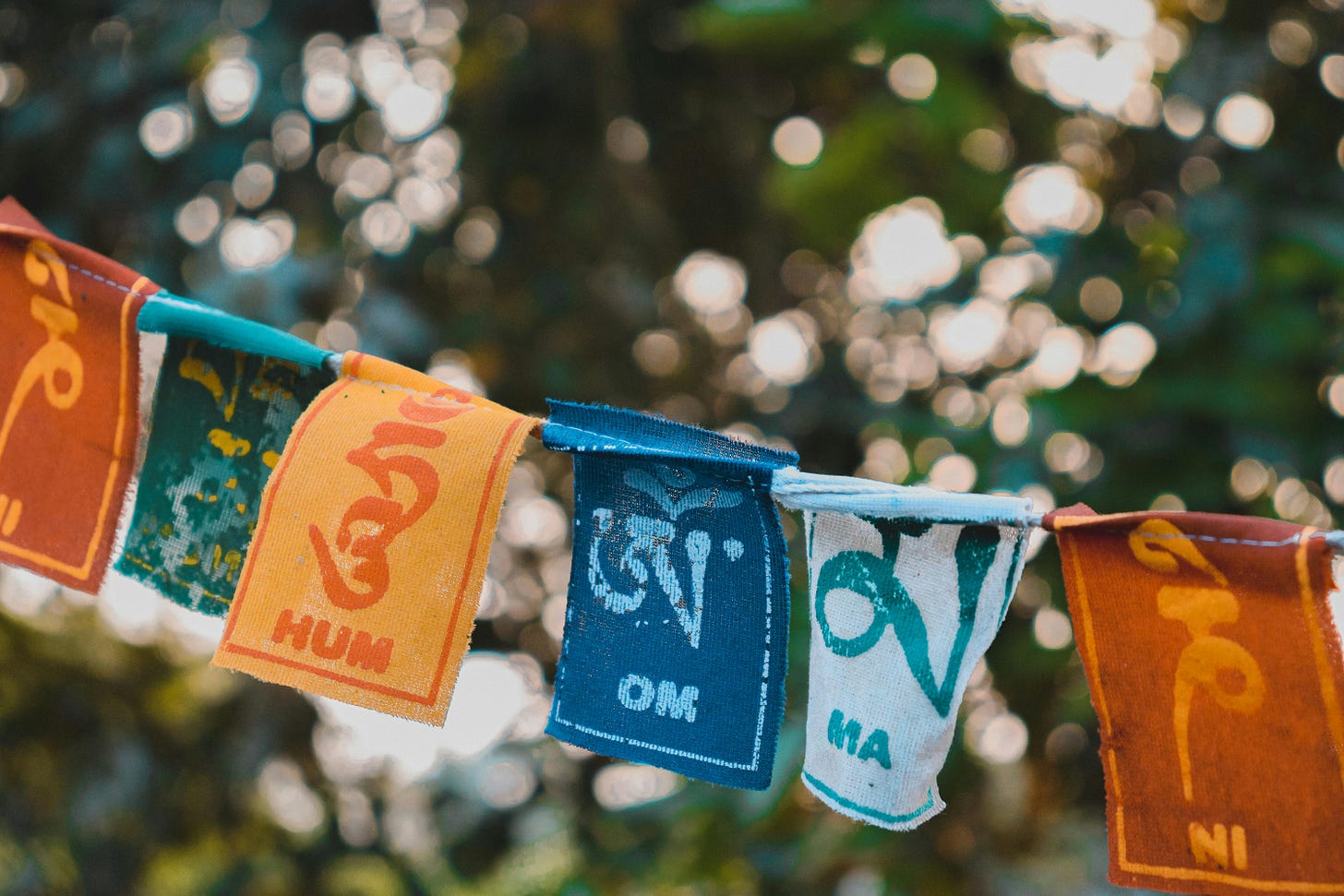
Others say, the earliest mention of meditation may be even earlier, in the Uttarajjhayaṇa, from Jainaism, (approximately 3rd-4th century BCE[5]).
“One early passage (Uttarajjhayaṇa 29.72/1174) speaks of a ‘pure meditation’” [6]
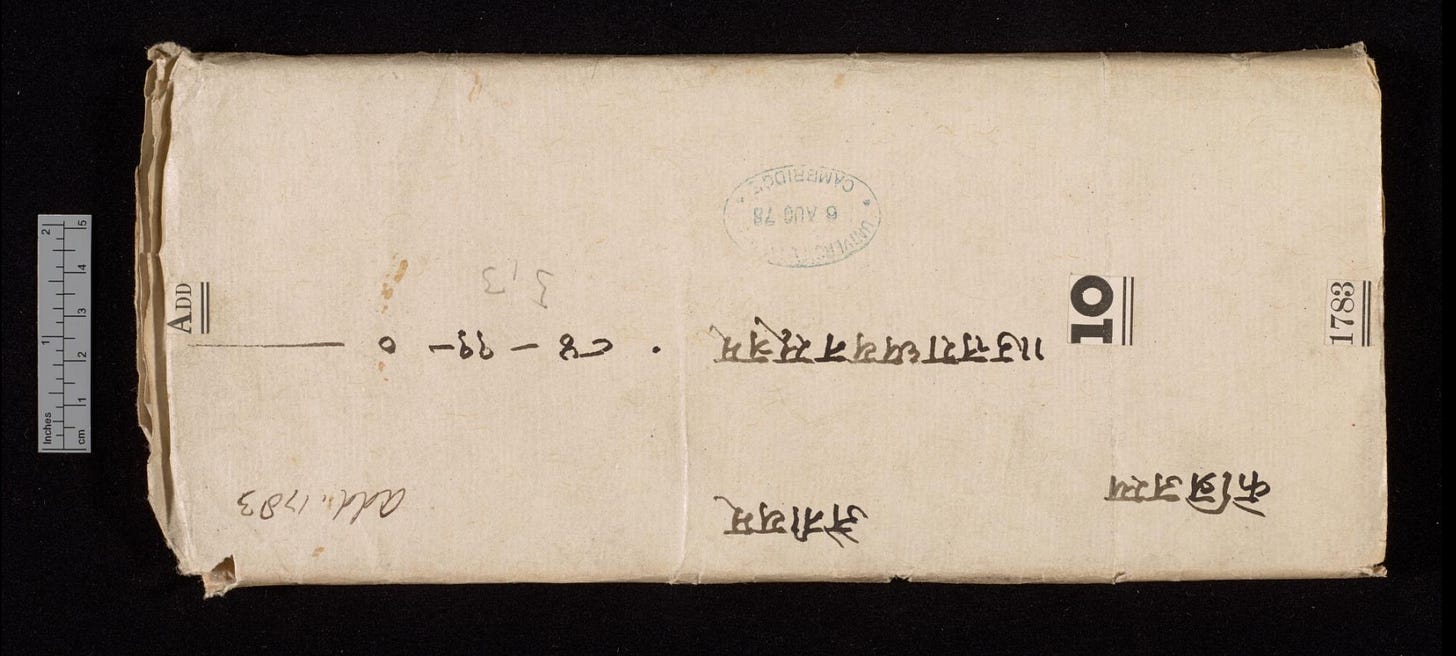
Although, there is some debate about the extent to which this represented meditation instruction.
“The history of Jaina meditation shows a number of discontinuities and innovations that show that there was much uncertainty with regard to the way in which Jaina monastics (and perhaps lay followers) were supposed to meditate, or whether they were supposed to meditate at all.” [7]
However, there is an even earlier reference to meditation in the Brihadaranyaka Upanishad (7th-6th Century BCE[8]) of Vedic, or early Hindu, tradition:
“Having become calm and concentrated, one perceives the self (Ātman) within oneself.”[9]
And bear in mind the Brihadaranyaka Upanishad lists 57 Vedic scholars who taught the oral tradition from one generation to the next,[10] which suggests that meditation may have been in practice much earlier.
What I am desperately trying to get across here is that meditation is nothing new, has been practiced for millennia, in one form or another, and therefore perhaps might have contemporary relevance to help YOU!!! (Not to necessarily become enlightened, just to cope with the drama of everyday life! We don’t all want to be spiritually enlightened at the top of Maslow’s Hierarchy of Needs, some of us just want to get through the day, with less pain and drama!)
From the most ancient record of meditation to the most recent, perhaps the most famous this century is Transcendental Meditation, invented by Maharishi Mahesh Yogi (who interestingly wrote a commentary on the Bhagavad-Gita[11], referred to above) which he began teaching in 1955. Famously associated with The Beatles (see pic below), who infamously fell out with him[12]. But that doesn’t necessarily mean we should throw out the baby with the bathwater!
But why does it matter who invented meditation? (The kids are crawling the roof!)
Who invented meditation matters because there are widely varying methods of practice associated with different traditions, and you need the right one that works for you. Otherwise, how do you know?
Are you going to research and try all of them yourself, or subscribe to Whichwayhow.com, and let me do the hard work for you? I have read so many, like you, and most have gone right over my head and resigned to the useless perhaps-try-later drawer, never to be considered again! Right? You can’t begin to try something different, until you trust somebody. Hopefully, Whichwayhow.com is who you trust. (End of plug!)
Not even I, though, can speak for ALL the different ways of meditating to my subscribers, only for the methods that I have researched for you, and tried myself. Which include, from above: 1) The Four Tetrads of the The Ānāpānasati Sutta; 2) Om Mane Padme Hum; and 3) Transcendental meditation. Plus, one mystery bonus method if you keep reading until the end!
But first, what does science have to say about the benefits, if any, of meditation? You need to consider these carefully, because you don’t just have to take my word for it, and I’ll keep it brief, too, because I know you’re busy, and I’ve got to pick the kids up! (How does anybody have time to meditate? This better be good. [It is!] If practicing meditation for twenty minutes a day doesn’t offer you these benefits— and save you untold misery for many more hours—using my chosen method how—I’ll refund your subscription! This is the real deal!
What does science have to say about the benefits of meditation?
Reducing Anxiety and Depression
Let’s start with the last, the baby and the bathwater, Transcendental Meditation (TM), because we ended by knocking it, with the Beatle’s fallout, and who knows, I may like it the best!
During the COVID 19 pandemic, 65 frontline Healthcare providers from three South Florida hospitals were taught TM and practiced for 20 mins a day. After 3 months there was a mean reduction in Anxiety of 62% and depression, 50%.[13]
You might fairly say this is a very small study. However, a meta-analysis of randomized controlled trials from more than 600 research papers, from which 14 were selected focusing on anxiety among 1,295 participants, found that populations with the highest initial anxiety levels in the 80th to 100th percentile, after practicing TM, showed the greatest benefit with anxiety levels reduced to the 53rd to 62nd percentile range.[14]
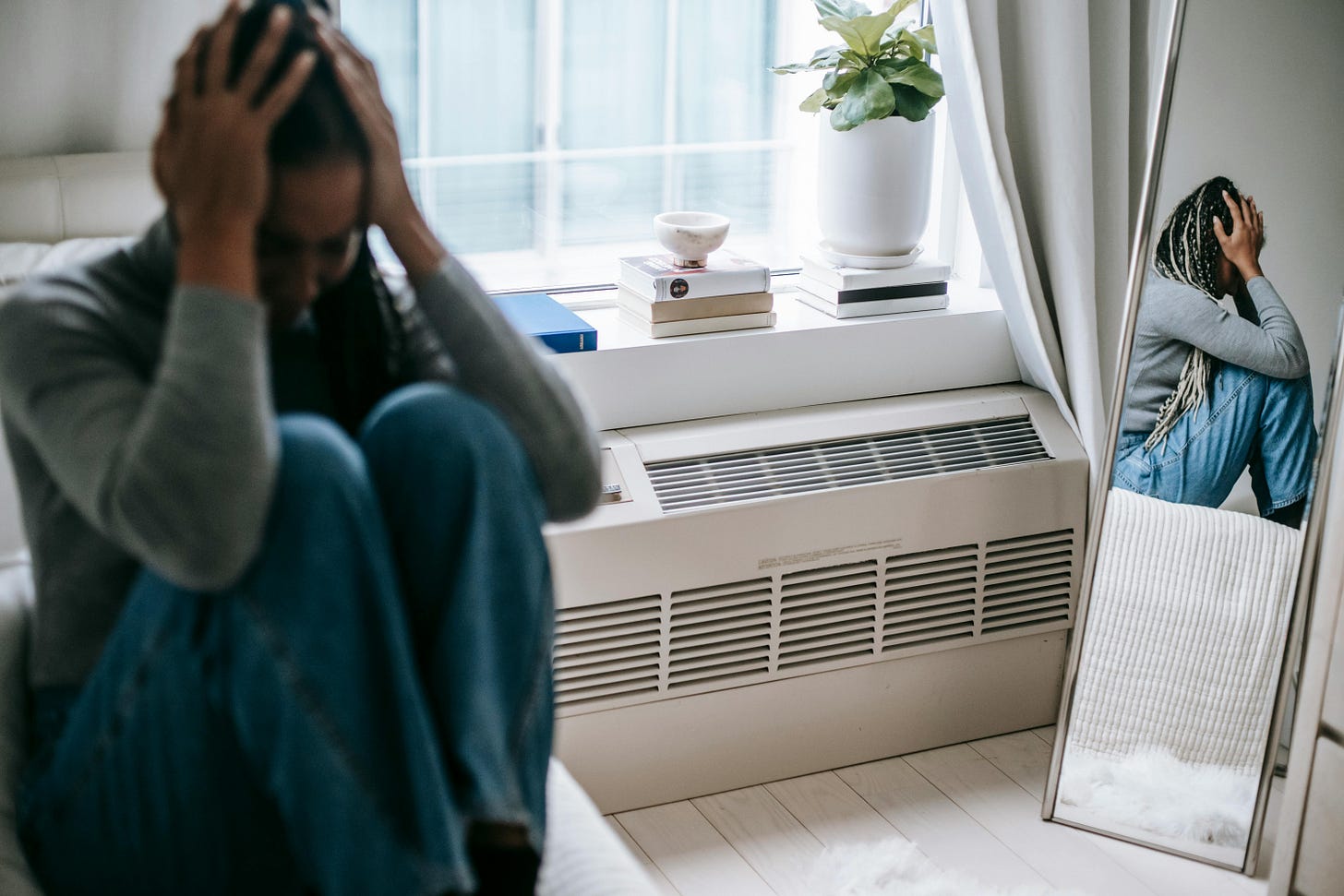
But beneficial effects of meditation on reducing anxiety are not just found in TM. Another study, “Randomized control trial of Mindfulness Meditation for Generalized Anxiety Disorder: Effects on Anxiety and Stress Reactivity” found that:
“1. Mindfulness-Based Stress Reduction (MBSR) appears to be an effective tool to reduce anxiety in patients with Generalized Anxiety Disorder. 2. Patients who learned Mindfulness Meditation had less stress reactivity, and were more resilient, to a laboratory stress task.”
And the reason why they think meditation worked at reducing anxiety is instructive, particularly in view of my opening example above:
“Because mindfulness meditation teaches participants to let thoughts pass by without judgment, it is possible that participants who learned MBSR were less likely to ruminate over negative thoughts about the speech and their performance, and treated themselves with more kindness and less self-judgment, an inherent part of the practice."

An even larger meta-study[15] reviewing 17,801 citations, and focusing on 47 randomized clinical trials of 3,320 participants found an effect size of 0.22 to 0.38 for reduced anxiety symptoms from using a mindfulness meditation program, which means that the average person would have lower anxiety symptoms than about 58-65% of people who didn’t participate. For depression the effect size was 0.23 to 0.33 which means that the average participant would have lower depression symptoms than about 59-62% of non-participants.
While this is considered a small to moderate outcome, to put this in context, it is equivalent to the benefits of taking anti-depressants without any of the side effects:

“These small effects are comparable with what would be expected from the use of an antidepressant in a primary care population, without the associated toxicities.”
In terms of the meditation training provided for participants, MBSR programs provided 20-27.7 hours training over 8 weeks, other mindfulness meditation programs provided half this amount, TM trials provided 16-39 hours training over 3-12 months, while other mantra programs about half, too.
I recount this because I found it incredibly hard to maintain my practice on a daily basis without any support, and if you don’t maintain it yourself, or with someone, or part of a group (there are many Buddhist centres you can join locally) you may not see the benefits. You can still do it alone if you want to, and have the necessary self-discipline, but keep in my mind how much training they had to produce these results! Consistency is everything, as we shall see later, whatever method is right for you.
Which way is the best to meditate and how?
Do you want the good news or the bad news first?
The bad news is that nothing is free, every method requires effort, time and/or money, but you probably knew that already. Which is also the good news; not every method requires money!
As I said, I tried three methods, over more than six months, and I will describe the personal challenges they involved in terms of effort, time and money and effectiveness in my personal experience, concluding with the method I found that works best for me.
1) Transcendental Meditation
Transcendental Meditation is the easiest of the three methods I tried but the most expensive (from low/no wage £190 on a scale up to £490 for household incomes over £60K), and it is surrounded by a certain mystique of preparation, which all the Hollywood endorsements don’t really explain.
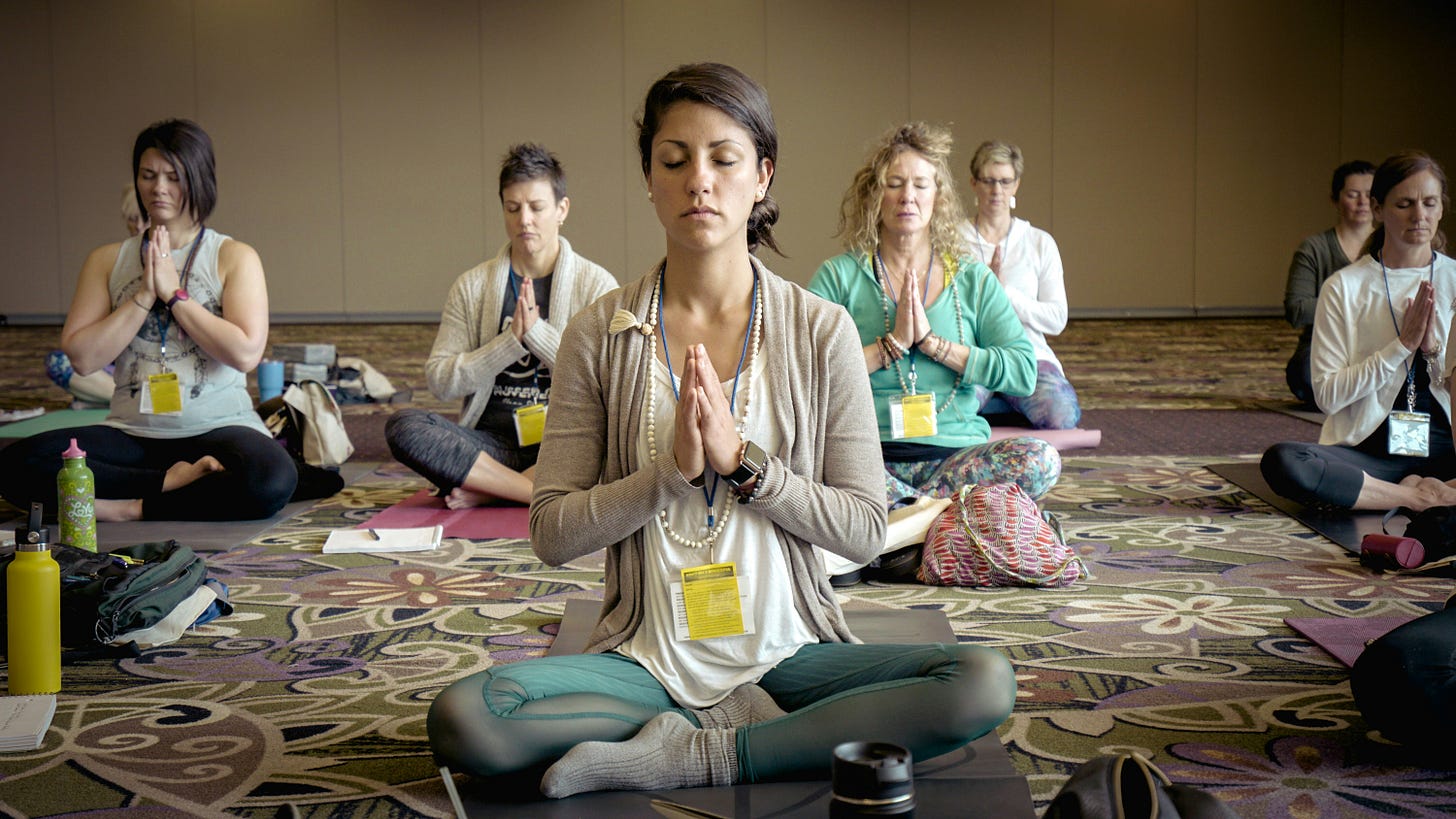
You have to book an appointment with a registered TM instructor and bring certain gifts for the ceremony: two pieces of fruit; some flowers; and a clean white handkerchief. My instructor seated me in an armchair, and told me to relax, while she knelt at an improvised altar, with a photo of, I think, Maharishi Mahesh Yogi, and lit two candles before placing my gifts on it. She sung a hymn and chanted some words I didn’t understand, and then whispered a two-syllable word in my ear. Apparently, this is unique and different to every candidate.
Technique. She asked me to keep repeating this word in my mind, with my eyes closed, until she returned twenty minutes later. She asked me to practice this for twenty minutes every morning at sunrise and every evening at sunset.
There was no need to adopt any lotus position, just sit comfortably, with feet flat on the floor, and hands folded over one another.
There is slight to moderate evidence[16] that any mantra, or single focus on a meaningful phrase to you, repeated over and over again may confer beneficial effects on mental health, exemplified by TM, because the word I was given had no meaning to me, except by the context of the altar and the authority of the instructor.
There is a fantastic video by David Lynch, the famous film director, on YouTube explaining Transcendental Meditation here, and Ray Dalio and Martin Scorsese here.
2) Om Mani Padme Hum
The second method I will explain is one of the oldest Buddhist methods of meditation, a mantra, “Om Mani Padme Hum,” considered by the Buddha, “the most beneficial mantra” in the Mahayana Karandavyuhasutra, and “the condensed form of all the Buddha’s teachings”. [17]
Technique. Recite “Om Mani Padme Hum”:
Om: Sounds like "A-ooh-m" (A-u-m)
Mani: Sounds like "mah-nee" (with a short "a" as in "father")
Padme: Sounds like "pahd-may" (with "pad" rhyming with "bad" and "may" like the month)
Hum: Sounds like "hoom" (with a nasal "m" sound at the end)
So, the full pronunciation would be: "ohm mah-nee pahd-may hoom."
You don’t need to understand the meaning to benefit from this mantra, as we saw above, but I personally found it strange chanting something I didn’t understand, and the Dalai Lama maintains that it is essential to understand the meaning:
OM means the mother of all sounds—body, mind, speech—which leads to the truth.
MANI means ‘jewel’ or altruism/compassion. Just as a jewel removes poverty, so altruism/compassion removes the poverty of suffering.
PADME means ‘Lotus flower’ representing wisdom, (purity), like a lamp in the darkness.
HUM means ‘Union’, ‘Indivisibility’, combination of altruism and wisdom, ‘I want that’ or Seed which will sprout into a plant of enlightenment. [18]
This is closest to the Dalai Lama’s interpretation but there are many commentaries on the meaning of this mantra, and, although approached in a different way—referencing God and the Devil, I suspect for Western ears—I recommend this one here by Ven. Guan Cheng.
How can Mala beads help?
You don’t need any equipment to recite a mantra, but in practice I found Mala beads really helpful, to support this technique.
Equipment: 108 Mala Beads – 8mm with string tassel.
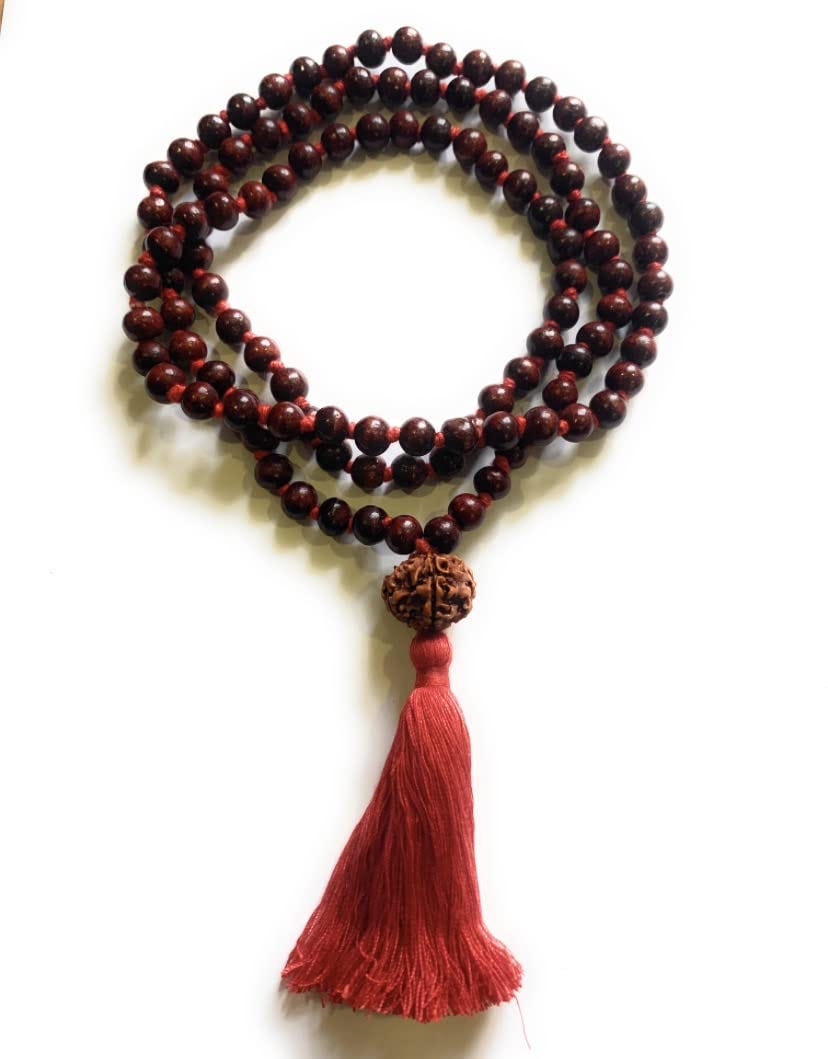
These are the Mala beads I bought for £11.99 on amazon, and I like them because the size of the 8mm beads is not too small, unlike the 6mm beads I tried which kept slipping, and the tassel makes it easy to see, and more importantly feel, where you are in your round. But, frankly, any 108 Mala beads will do, and if you want to support the Tibetan nuns project, you can even buy pre-blessed ones in all shapes and sizes, including amethyst and stones with apparently special properties! Just don’t get them wet or the string may break!
Technique.
Holding each bead between thumb and index finger of the left hand, from the guru bead (above the tassel), and count one bead for each recitation of the mantra, before passing to the next one, clockwise, until you reach the guru bead, and then reversing the beads, over your hand, and continuing to the next round, for five rounds or twenty minutes.
In terms of cost, the beads are relatively cheap, and in terms of effort, this is the second easiest after TM, because you have to learn the mantra, which is easy, but also get used to using the beads. However, once you find your natural rhythm, and I found there to be a natural tone and speed which resonated with my breathing and speaking, it is very easy.
One tip is to begin by imagining you are radiating goodwill to your immediate family, then widening the circle, to your street, town, country, the world.
The nice thing is that it is very easy to maintain focus, because it is so active, and if you find yourself easily distracted, or too hard to focus, using other methods, this method will be a lot easier.
3) The Four Tetrads of the The Ānāpānasati Sutta
This is the hardest method I tried, and is really the culmination of many years practicing Meditation and perhaps not for beginners, because it involves memorizing the following sixteen verses:
The Four Tetrads of the The Ānāpānasati Sutta
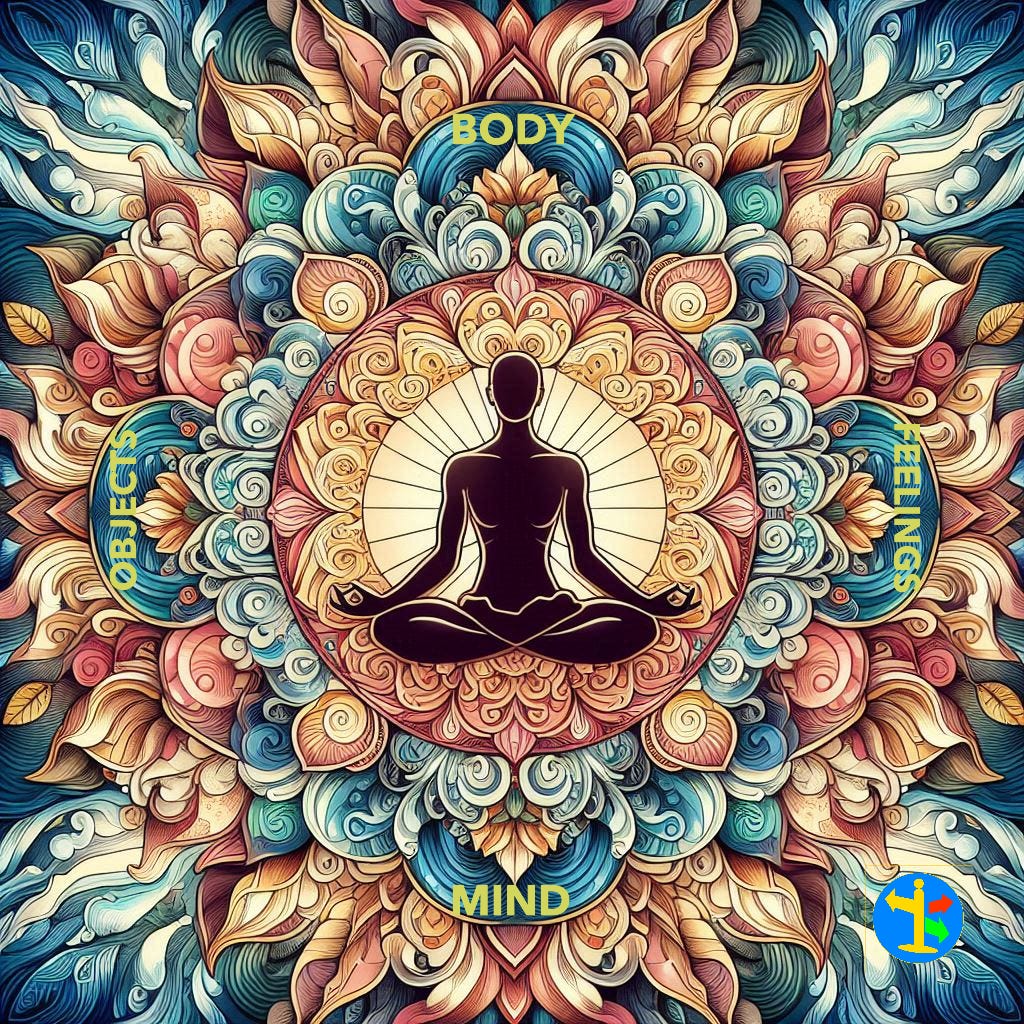
First Tetrad: Contemplation of the Body
Breathing in long he knows 'I am breathing in long.'
Breathing in short he knows 'I am breathing in short.'Breathing out long he knows 'I am breathing out long.'
Breathing out short he knows 'I am breathing out short.’He trains himself 'breathing in, I experience the whole body'
'breathing out, I experience the whole body.'He trains himself, 'breathing in, I calm the bodily formation.'
'breathing out, I calm the bodily formation.'
Second Tetrad: Contemplation of the Feeling
He trains himself, 'I will breathe in experiencing joy.'
He trains himself, 'I will breathe out experiencing joy.’
He trains himself, 'I will breathe in experiencing pleasure.'
He trains himself, 'I will breathe out experiencing pleasure.'He trains himself, 'I will breathe in experiencing mental formation.'
He trains himself, 'I will breathe out experiencing mental formation.'He trains himself, 'I will breathe in calming the mental formation.'
He trains himself, 'I will breathe out calming the mental formation.'
Third Tetrad: Contemplation of the Mind
He trains himself, 'I will breathe in experiencing the mind.'
He trains himself, 'I will breathe out experiencing the mind.'He trains himself, 'I will breathe in pleasing the mind.'
He trains himself, 'I will breathe out pleasing the mind.'He trains himself, 'I will breathe in concentrating the mind.'
He trains himself, 'I will breathe out concentrating the mind.'He trains himself, 'I will breathe in releasing the mind.'
He trains himself, 'I will breathe out releasing the mind.'
Fourth Tetrad: Contemplation of the Mental Objects
He trains himself, 'I will breathe in observing impermanence.'
He trains himself, 'I will breathe out observing impermanence.'He trains himself, 'I will breathe in observing dispassion.'
He trains himself, 'I will breathe out observing dispassion.’
He trains himself, 'I will breathe in observing cessation.'
He trains himself, 'I will breathe out observing cessation.'He trains himself, 'I will breathe in observing relinquishment.'
He trains himself, 'I will breathe out observing relinquishment.' [19]
This seems like a daunting task but I found if you start with just one tetrad and get comfortable with that, and then add the next couple of lines, and slowly build up, you will find you are reciting the four tetrads quite naturally. It isn’t as hard as it looks, trust me, but my tip is to make sure you memorise the titles of each tetrad, which are like your anchor points for the verses within.
How to body scan?
Another tip, which applies to all the methods, is that I found it very useful to body scan before starting.
Technique.
Sitting upright on a chair—imagine a string pulling your head up, keeping your chin horizontal— feet flat on the floor, (if you can raise or lower the chair or find one that keeps your knees at right angles to the floor even better!) and the backs of your hands on your knees, thumb and forefinger touching, look around your environment, listen to any sounds, feel the touch of your feet on the floor or any point of contact with the chair.
Close your eyes. Now starting with the toes of your left foot, feel the muscle under your foot, trace your ankle with your mind, up the calf, thigh, up through your body, to your left shoulder, left bicep, left hand, and back up your arm, across your shoulders to your right arm, down the arm to the hand and back to your shoulder, to your neck, up over your head to your face, your ears, your cheeks, your mouth, your nose, your eyes, between your eyes and rest your attention on your ‘third eye’. Notice your breathing, focusing in on the edge of your nostrils, feel the air come in and out, naturally, without making any effort.
BONUS METHOD OF MEDITATION
Breath-Contemplation.
Some meditation practices suggest focus on the inflows and outflows of breath is the only technique you need, without employing any of the methods above. This is the bonus method I promised earlier. You don’t have to do any more than this. Your mind will naturally want to wander but all you need to do, without judgment, blame or complaint is bring your focus back to the breath, which we call present-moment awareness.
“You cannot contemplate without concentration… Concentration gives you the power,” Ven. Guan Cheng.
The breath is our object of concentration. The object of concentration could be anything, the flame of a candle, a bowl of water, many things, TM uses a word/phrase as the object of silent concentration, OM MANI PADME HUM similarly uses a mantra, as the externally vocalized object of concentration. But we cannot concentrate, without an object, and the Buddha suggested the best one was our breath.
However, the object of concentration is only half the story, if you consider Buddhist practices, like I said from the start in my broad definition, contemplation is the other half. Contemplation of what?
When we concentrate on the breath, or a verbalized mantra, we are naturally contemplating our body, when we concentrate on a silent mantra, we are naturally contemplating the mind.
Breath-contemplation is harder than it sounds, because the monkey-mind wanders, wanting to contemplate anything else! The trick is to make peace with your mind, and lovingly return to the breath without blame, fear or anger, returning from the waves to the sea of calm underneath.

The Four Tetrads of the The Ānāpānasati Sutta comes into its own in contemplation of Body, Feeling, Mind and Mind-Impressions.
But what happens if you are always thinking negative thoughts?
An alternative dimension to this discussion, is what happens if you concentrate on something bad? Is the corollary true? That is, if we don’t meditate, if we are reactive without thinking, and dwell on dark thoughts?
“Whatever the mind can concentrate on, the mind can do… Whatever you concentrate on long, wholeheartedly, you carry it out, good or bad… If you’re concentrating on bad behaviour, you’re gonna be a criminal…. Part of the Meditation is to clean up your garbage…. They stink!... The more you clean it up, the cleaner you are… Nobody can clean it up for you.”
These are the highlights from watching Ven. Guan Cheng’s video series, chosen because I think they relate to my earlier scenario, and he brings the message home, for me, with this one, explaining that meditation is not a separate activity but a way of life.
“Meditation is not just sitting meditation. Meditation is in every moment of your life… In walking and lying down, any actions… Every second you are in meditation you are in control of your own mind. Are we in control of our mind? Mostly we are not. Most of the time we are not in control of our own thoughts. If you’re in control you won’t be angry, if you’re in control you won’t be jealous, if you’re in control you won’t have anxiety, depression, guilt, fear, worry. You don’t want those, but they all come up because you can’t control them.”
[Ven. Guan Cheng from a YouTube video on How to Meditate[20]]
Ven. Guan Cheng also says you can’t drink poison on the one hand, and meditate on the other because it will only increase the affliction. Here, it is important to note, he is not just meaning poisoning by alcohol, (if you need help with quitting or controlling drinking see my book here), but any bad behaviour, which may damage you, emphasizing the importance of the eightfold path.
“You could be a master in concentration but if your moral virtue is bad, you will never get enlightened. As a matter of fact, you will get into more and more mental afflictions…. A lot of people say I want to be a monk… For the first five years you learn nothing… You have to stop all your bad speeches… That’s the first requirement, moral standard.”
I think this is great wisdom, or according to our mantra, earlier, wisdom in the lotus flower.
Finally, which way is the best to meditate and why?
Conclusion
The best method of meditation will depend on your personality, character, education, culture, religion and mental characteristics like focus and concentration. Not one size fits all, which nobody ever told me. I just assumed I was doing them wrong, and therefore it was me, or the way I was doing the technique, rather than the method, to blame.
Don’t get me wrong, technique is important, and, like I said at the start, nothing is free, they all require self-discipline, and varying degrees of effort, but, that said, I still found some more comfortable to practice than others.
In terms of comfort and ease, TM wins hands down, but it is so expensive. What you are really buying is the mystique, and who’s to say that isn’t worth it, if it adds to your commitment to practice. I will also confess I don’t believe the mantra they give you, is any different to using any other word or phrase that has significance to you, that is, you can create the meaning yourself, without the context, Eg. ‘Loving-kindness’, over and over again for twenty minutes, and that will not cost you a penny, and, research shows (see above), and I truly believe, produce the same benefits.
We have considered the benefits of meditation above, and it is worth noting, perhaps, that meditation is not a panacea for curing everything, according to the research, but there are proven slight to moderate effects for reducing anxiety and depression. Do not go into it expecting to levitate or gain enlightenment and become the Buddha after a few weeks!
How to manage your expectations of meditation
Whatever your worries in life, Ajahn Brahm, has a talk about it among thousands available free online at the Buddhist Society of Western Australia, and this is what he has to say about managing your expectations.
“It is like a person who goes to work all day Monday and gets no money at the end of the day. 'What am I doing this for?', he thinks. He works all day Tuesday and still gets nothing. Another bad day. All day Wednesday, all day Thursday, and still nothing to show for all the hard work. That's four bad days in a row. Then along comes Friday, he does exactly the same work as before and at the end of the day the boss gives him a pay cheque. 'Wow! Why can't every day be a pay day?!'”[21]
Gelong Thubten said you don’t go to the gym and suddenly see all your muscles transformed after one session, but you gradually become fitter. And if you don’t go, you start noticing it very quickly. Meditation is no different. That’s easy to forget!
If I skip my hourly morning routine, which usually involves a breathwork exercise (see Whichwayhow breathwork here 20mins) meditation (20mins), and yoga (5mins —see Whichwayhow yoga— coming soon!) it is like missing my gym-for-the-mind.
The Buddha said if you haven’t got time to meditate for twenty minutes, meditate for two hours.
If all this talk of Buddha, or Buddhism, is off-putting for religious or cultural reasons, but you still crave the benefits, Dr Andrew Huberman, coined the term, “Non-sleep deep rest” (NDSR), which is a secular method of practicing meditation which he explains here.
There are also many apps, Eg. Headspace (£9.99/month), and apps are proven to have slight to moderate researched benefits for reducing anxiety and depression[22], too.
You can also find many guided meditations free online, and I would recommend Ajahn Brahm’s, here.
In my book, “Holmes’s Complete Guide To Stop Drinking Alcohol; the easy, mindful and pain-free way,” I describe meditation as an essential tool to help conquer addiction. You can cut down on your drinking while reading it, and gradually build up your meditation practice, to help you cope when you finally quit completely, and there is a program in the book to help you plan this.
Thank you for reading.
If you’d like to buy me a coffee you can do so below:
Please share this article to help others:
And if you don’t want to miss the next deep dive in a fortnight—which may be just what you need to solve your problem—subscribe for FREE below (No paid option, Whichwayhow.com is always free!)
If you enjoyed this post, you may also enjoy: Whichwayhow to do Breathwork, Whichwayhow to Journal, Whichwayhow to Reverse Cavities and Whichwayhow to be a hero (of the everyday!)
If you have never done meditation before and find the idea a bit weird, like I did at the start, and want to schedule a 10x (40min lesson) Online zoom 1:1 bespoke course catered to your level of ability, contact me for current pricing at mark dot holmes at Whichwayhow.com.
References
[1] Tseng, J., Poppenk, J. Brain meta-state transitions demarcate thoughts across task contexts exposing the mental noise of trait neuroticism. Nat Commun 11, 3480 (2020). https://doi.org/10.1038/s41467-020-17255-9
[2] Dhammapada: The Sayings of the Buddha, tr. Thomas Byrom (Shambhala Publications, 1993)
accessed at 15:52 on 13th October 2024.
[4] https://www.freebuddhistaudio.com/texts/read?num=101&at=text Accessed at 16:40 on 12Oct2024.
[5] Yoga: The Indian Tradition. Edited by Ian Whicher and David Carpenter. London: Routledgecurzon, 2003. ISBN 0-7007-1288-7 page 64
[6] Bronkhorst, Johannes. (2016). The History of Jaina Meditation. 10.21313/hawaii/9780824855680.003.0005.
[7] JOHANNES BRONKHORST Discontinuity and innovation in the history of Jaina meditation (appeared in: Asian Traditions of Meditation. Ed. Halvor Eifring. Honolulu: University of Hawaii Press. 2016. Pp. 93-102)
[8] Patrick Olivelle (1998). The Early Upaniṣads (in English and Sanskrit). Oxford University Press. p. 11-12. ISBN 978-0-19-535242-9.
[9] Flood, Gavin (1996). An Introduction to Hinduism. Cambridge: Cambridge University Press. pp. 94–95. ISBN 978-0-521-43878-0.
[10] Paul Deussen, Sixty Upanishads of the Veda, Volume 1, Motilal Banarsidass, ISBN 978-8120814684, pages 437–443. See also Max Müller, Brihad Aranyaka Upanishad The Sacred Books of the East, Volume 15, Oxford University Press
[11] Maharishi Mahesh Yogi. (1969). Maharishi Mahesh Yogi on the Bhagavad-gita: a new translation and commentary with Sanskrit text. Chapters 1 to 6. Harmondsworth :Penguin
[12] Bose, A. (2018). Across the Universe: The Beatles in India. Penguin Random House India
[13] Nestor MS, Lawson A, Fischer D. Improving the mental health and well-being of healthcare providers using the transcendental meditation technique during the COVID-19 pandemic: A parallel population study. PLoS One. 2023 Mar 3;18(3):e0265046. doi: 10.1371/journal.pone.0265046. PMID: 36867626; PMCID: PMC9983866.
[14] Orme-Johnson DW, Barnes VA. Effects of the transcendental meditation technique on trait anxiety: a meta-analysis of randomized controlled trials. J Altern Complement Med. 2014 May;20(5):330-41. doi: 10.1089/acm.2013.0204. Epub 2013 Oct 9. PMID: 24107199.
[15] Goyal M, Singh S, Sibinga EM, Gould NF, Rowland-Seymour A, Sharma R, Berger Z, Sleicher D, Maron DD, Shihab HM, Ranasinghe PD, Linn S, Saha S, Bass EB, Haythornthwaite JA. Meditation programs for psychological stress and well-being: a systematic review and meta-analysis. JAMA Intern Med. 2014 Mar;174(3):357-68. doi: 10.1001/jamainternmed.2013.13018. PMID: 24395196; PMCID: PMC4142584.
[16] Julie Lynch, Lucia Prihodova, Pádraic J. Dunne, Áine Carroll, Cathal Walsh, Geraldine McMahon, Barry White, Mantra meditation for mental health in the general population: A systematic review, European Journal of Integrative Medicine, Volume 23, 2018, Pages 101-108, ISSN 1876-3820, https://doi.org/10.1016/j.eujim.2018.09.010. (https://www.sciencedirect.com/science/article/pii/S1876382018304591)
[17] https://indivyoga.com/the-meaning-of-om-mani-padme-hum-in-tibetan-buddhism/ Accessed at 13:29 on 13th October 2024
[18] https://www.shambhala.com/snowlion_articles/om-mani-padme-hum-dalai-lama/ Accessed at 13:23 on 13th October 2024
[19] Fronsdal, Gil (n.d.), The Discourse on MIndfulness of Breathing. Ānāpānasati Sutta (Majjhima Nīkāya 118)
Accessed at 16:12 on 13th October 2024.
[21] The Basic Method of Meditation by Ajahn Brahmavamso 2017 URL: https://bswa.org/teaching/basic-method-meditation-ajahn-brahm/
[22] Gál, Éva & Stefan, Simona & Cristea, Ioana. (2020). The efficacy of mindfulness meditation apps in enhancing users’ well-being and mental health related outcomes: a meta-analysis of randomized controlled trials. Journal of Affective Disorders. 10.1016/j.jad.2020.09.134.
[i] Image generated using Microsoft's Image Creator by Designer AI tool on at 19:08 on 12Oct24



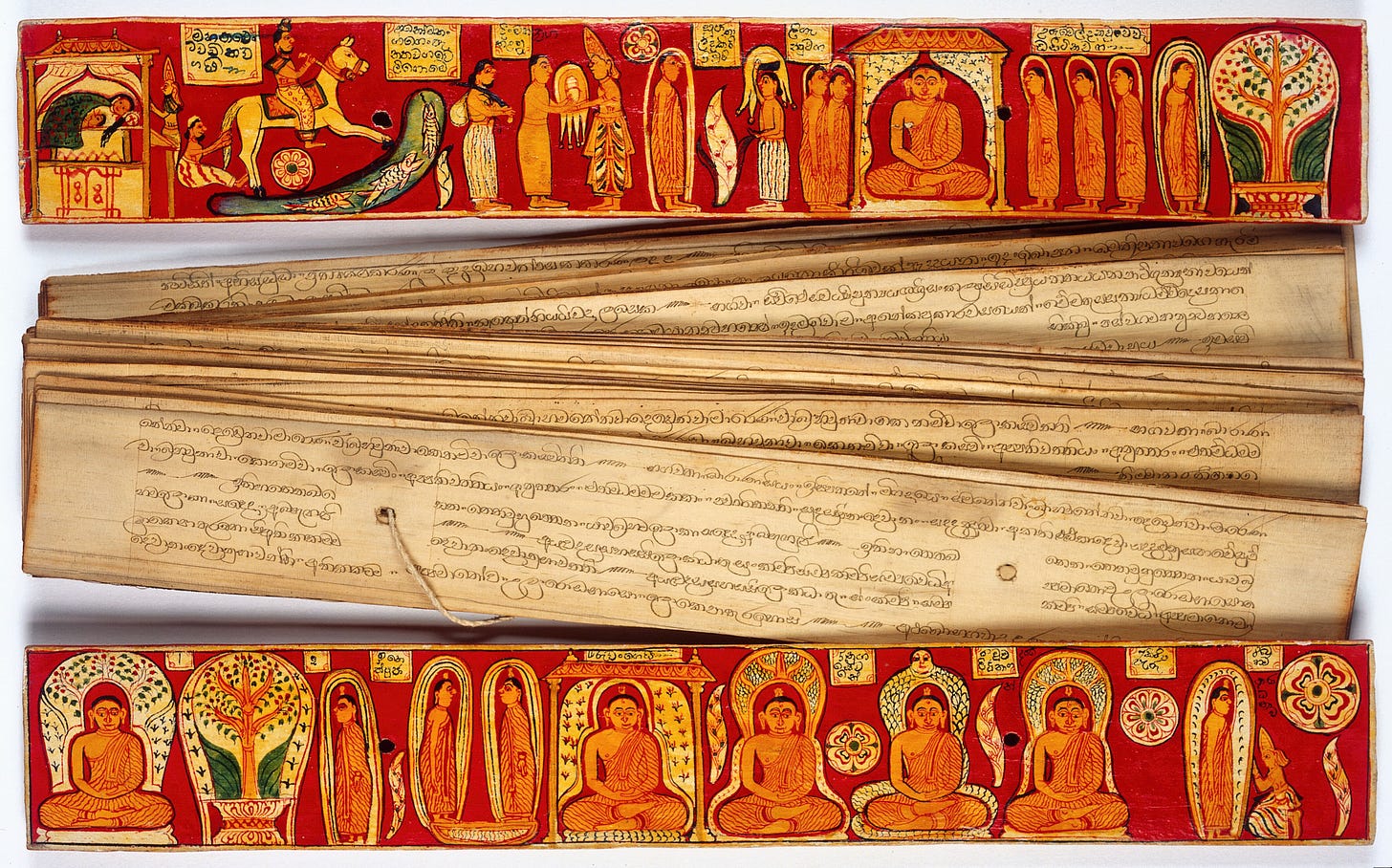
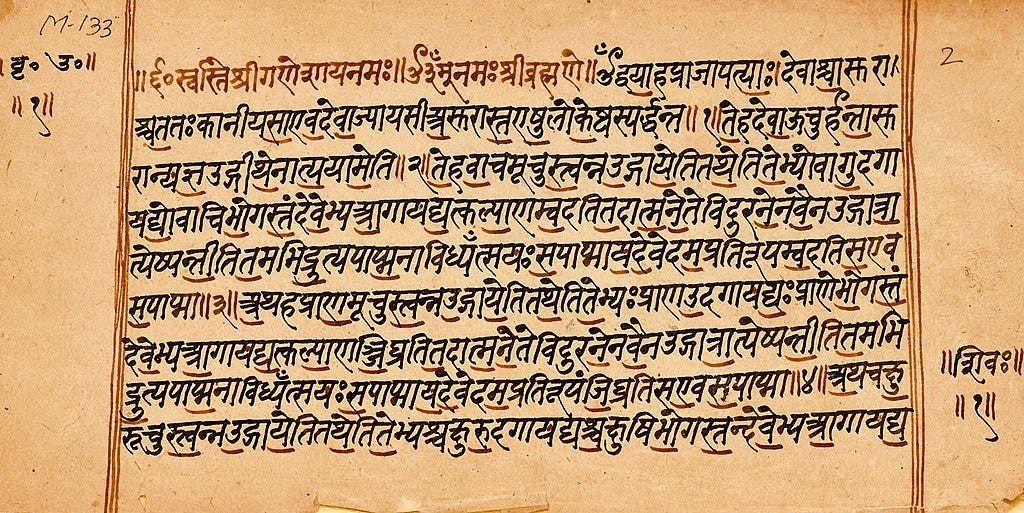
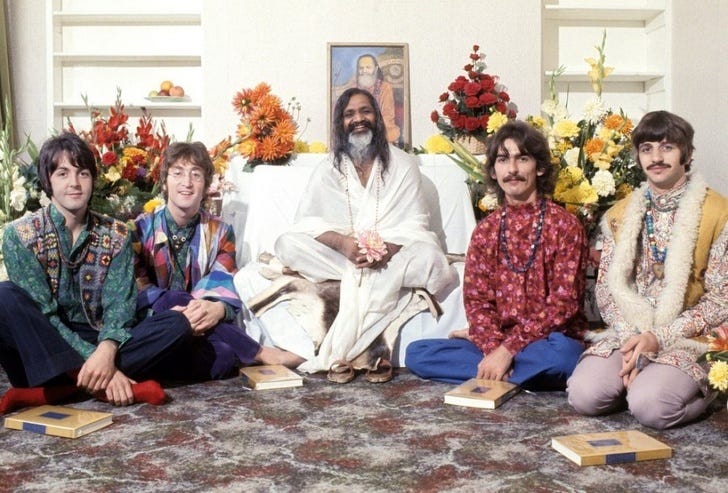


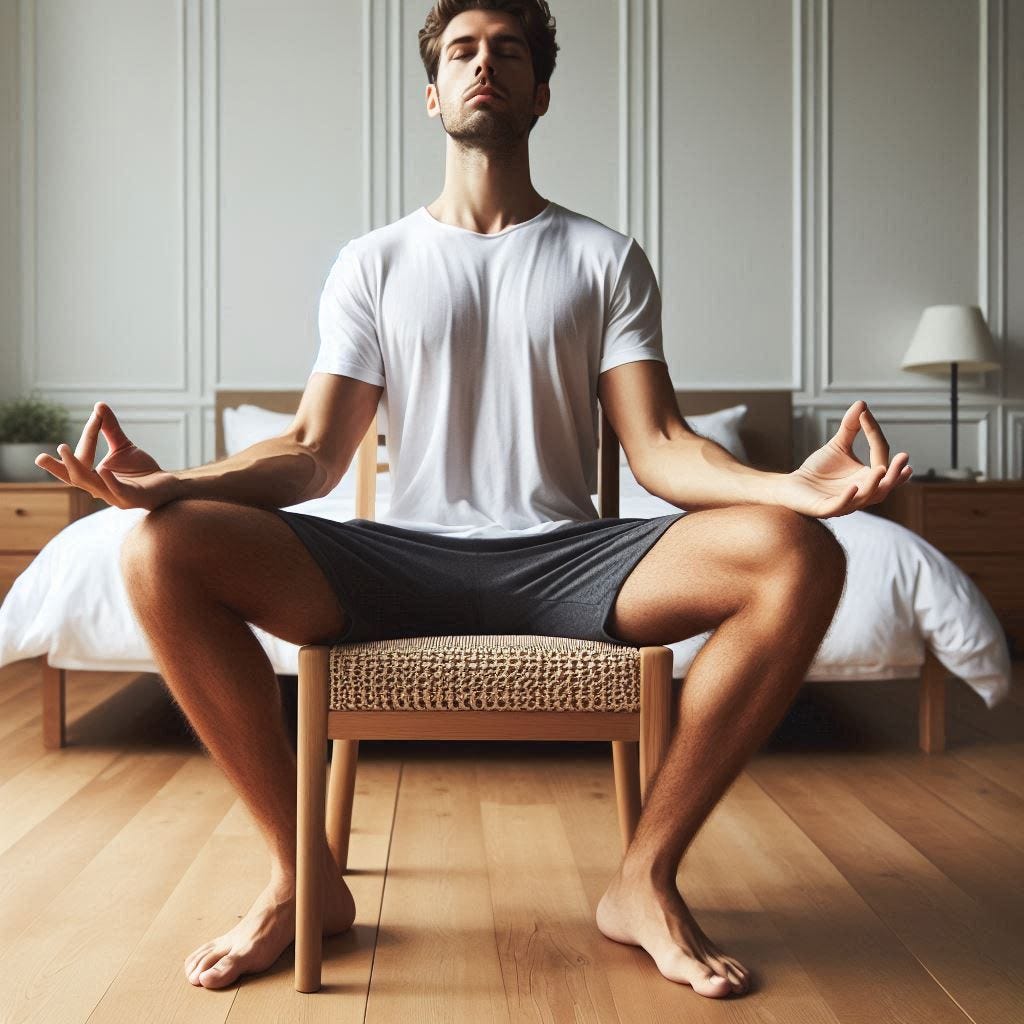
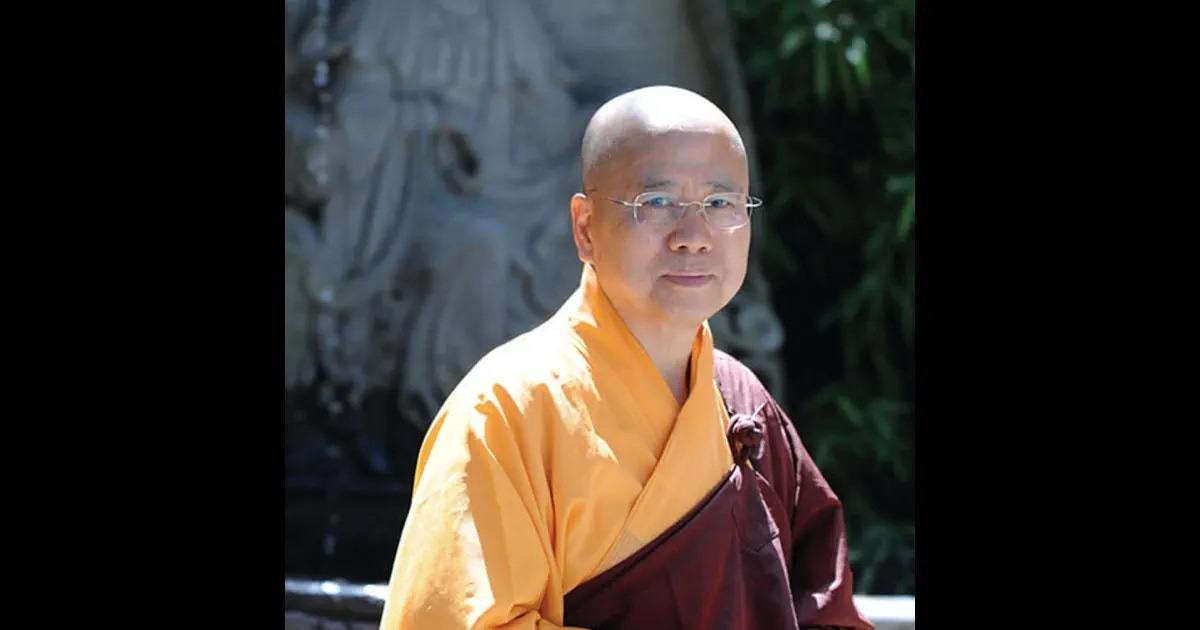
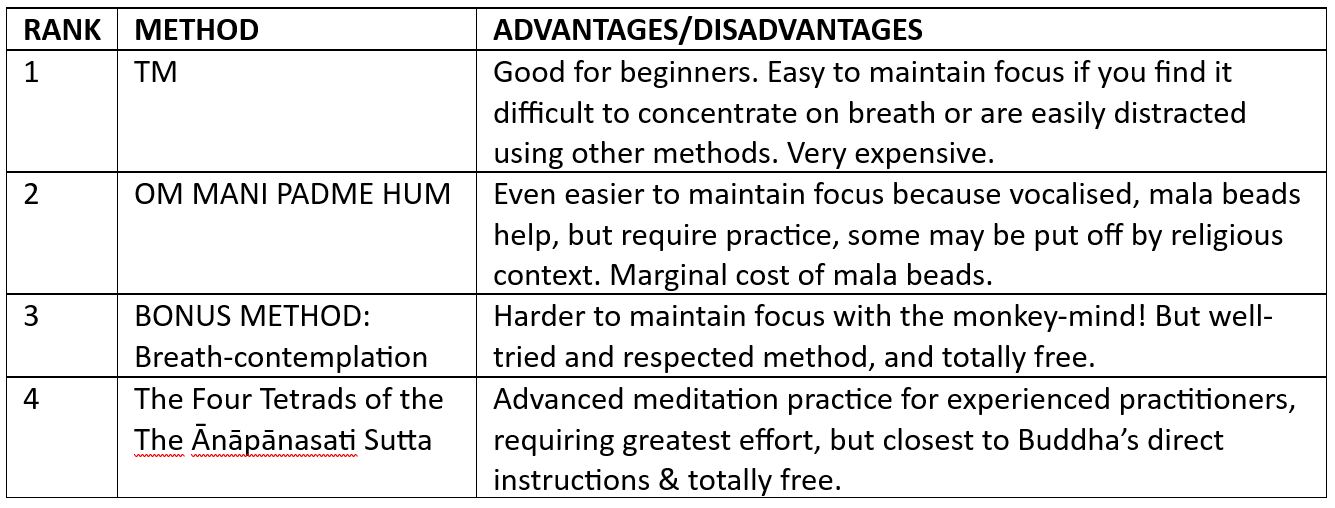

"The Buddha said if you haven’t got time to meditate for twenty minutes, meditate for two hours."
LOVE THIS
Thanks for this great indepth exploration, Mark! I'm a yoga and meditation teacher, but I mostly use the Calm app for my personal practice (since 2016). Meditation has been great benefit in my life sincei started practicing! My fave types of meditation are the body scan and metta meditation aka loving kindness - at least to teach! But body scan and breath practice personally.